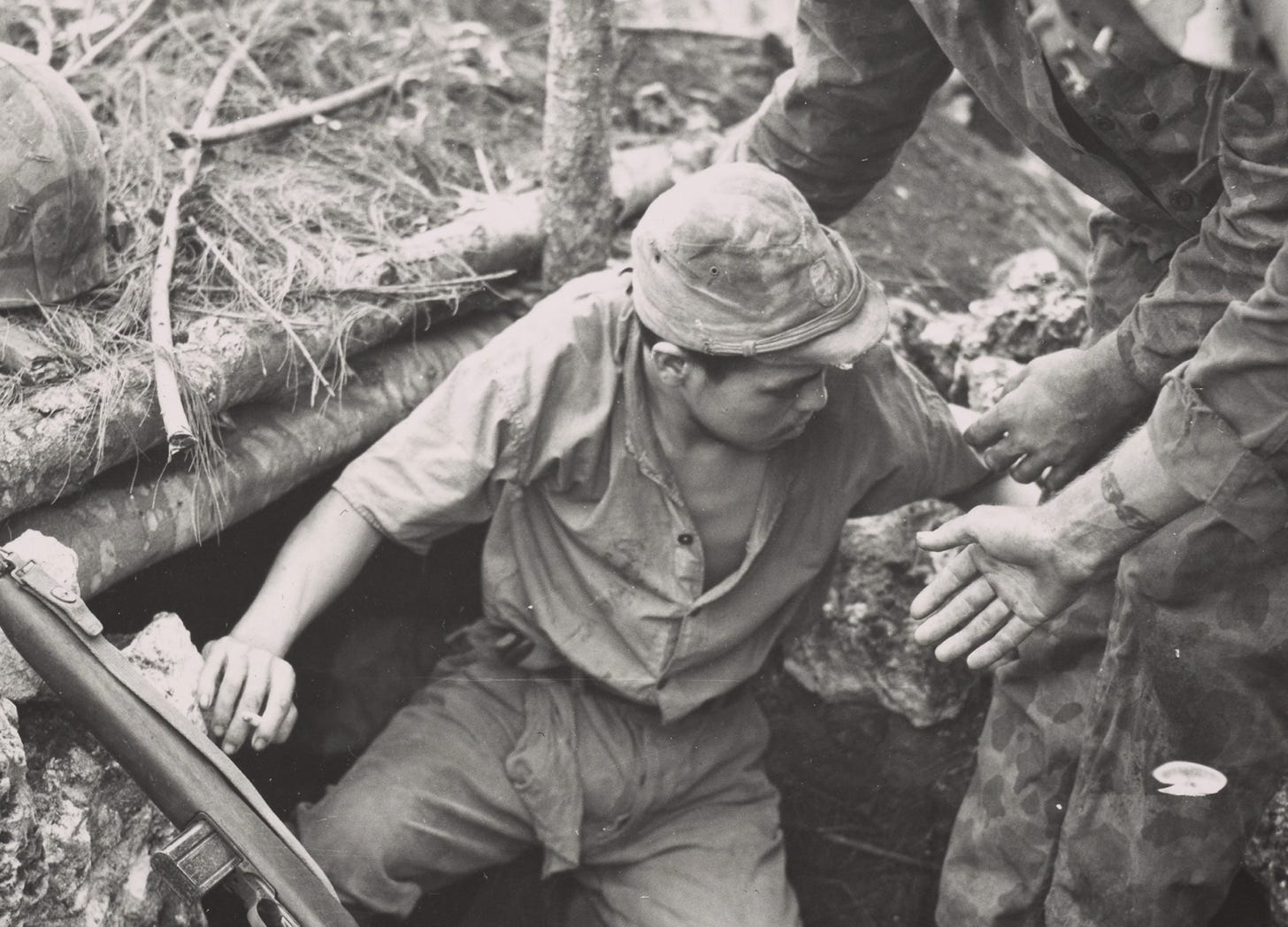This post concludes a five-part series. Thus, if you have not done so before, you will want to begin by reading the four preceding posts in the case (or, better yet, devising solutions to the problems they present.)
You decide to retain the services of Guy Gabaldon. You also recommend him for Navy Cross, the second highest decoration for gallantry awarded to members of the Sea Services of the United States. At the same time, you decline to promote Gabaldon beyond the rank of private first class.
Along with the rest of the 2nd Marines, your section takes part in the week-long battle for Tinian. After the end of that operation, the regiment returns to Saipan.
In the months that follow, your section supports the program of patrols and propaganda aimed at eliminating the last vestiges of Japanese resistance on Saipan. As part of this effort, you often assign Gabaldon to units venturing into the jungle covered mountains at the center of the island.
On 26 January 1945, while taking part in one of these forays, Gabaldon suffers a gunshot wound to his left forearm, an injury of sufficient severity to warrant evacuation to a naval hospital in the United States.
You later learn that, rather than endorsing your recommendation, your superiors have downgraded Gabaldon’s decoration from the Navy Cross to the Silver Star. (In the hierarchy of medals awarded to American servicemen, the Silver Star ranks between the Navy Cross and the Bronze Star.)
Soon after Gabaldon recovers from his wound, Gabaldon reports, as a student, to the Japanese language school at Camp Lejeune, North Carolina. After finishing his course there, he remains at the school for several months, serving as an instructor. On 15 November 1945, he receives his honorable discharge and returns to civilian life.
Late in 1960, you discover that the Secretary of the Navy has upgraded Gabaldon’s medal, thereby granting him the Navy Cross.

You suspect that this upgrade has something to do with the release of From Hell to Eternity, a (somewhat sensationalized) feature film that recounts a (somewhat embellished) version of the adventures of ‘the Pied Piper of Saipan’.
Sources
This case depends heavily on information provided in an interview that the late John L. Schwabe was kind enough to grant in 2009.
For Guy Gabaldon’s version of this story, see Saipan: Suicide Island (Saipan: Guy Gabaldon, 1990)
For a book that presents a very different view these events, see Gerald A. Meehl One Marine’s War: A Combat Interpreter’s Quest for Humanity in War (Annapolis: US Naval Institute, 2009) (Thrift Books)












This is such a great story and I wish my mom was still alive so I could ask her about it. She never told it to me, in all her war stories, and I don't know if it was still classified at the time or was just not reported till later. But I know she'd have been ticked by it and interested in getting, as Paul Harvey used to say, "the rest of the story."